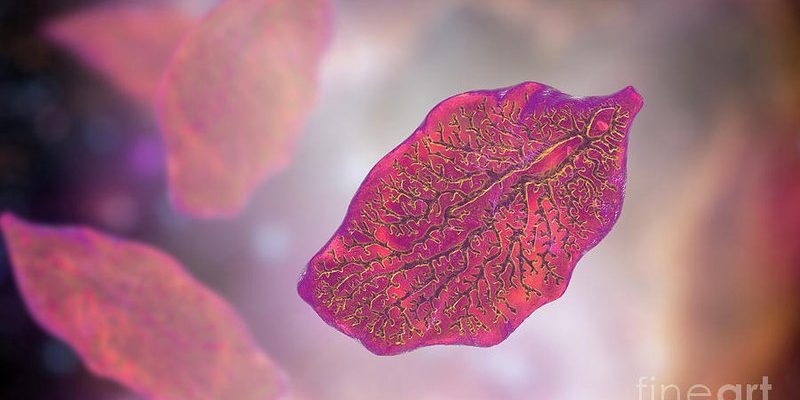
So, what exactly is a liver fluke? These flatworm parasites, belonging to the family Fasciolidae, often find their home in the livers of various animals, particularly livestock like sheep and cattle. But let’s not forget their wild side! The liver fluke is also fancy when it comes to choosing a habitat in the great outdoors. They’re picky eaters, preferring certain plants and environmental conditions that allow them to flourish in the wild.
In this article, we’ll dive deep into where you can find liver flukes and why they prefer those habitats. Let’s get into the nitty-gritty so you can understand these tiny creatures better.
Where Do Liver Flukes Thrive?
Liver flukes love to hang out in places that are wet and cozy. They are commonly found in freshwater environments, like rivers, streams, and ponds. These habitats provide the right conditions for their life cycle, especially for the larval stage, which depends on water.
A big part of their habitat preference comes from the plants that grow around them. **Water plants, particularly those from the genus *Lemna* (duckweed) and *Equisetum* (horsetail), are crucial**. These plants not only provide a place for the flukes to attach but also attract the snails that are part of their life cycle. Here’s the thing: without these specific plants, liver flukes would struggle to complete their life cycle and effectively reproduce.
You might be wondering how environmental factors come into play. Temperature and water chemistry are key. Liver flukes, being ectothermic animals, thrive in moderate temperatures and need clean water to survive. Polluted or heavily modified water bodies are less favorable for them, which is important for understanding their population dynamics in the wild.
Life Cycle of the Liver Fluke
To truly understand where liver flukes prefer to hang out, we have to look at their life cycle—it’s quite a journey! The life cycle of a liver fluke begins when the eggs are excreted in the feces of infected animals. They hatch in water, releasing larvae called *miracidia* that then need to find a host snail. This is where it gets interesting: the fluke’s journey heavily relies on the right habitat to find its intermediate host, which is essential for their development.
Once the miracidia infect the right snail, they undergo several transformations. The snail’s body provides a safe space and the nutrients needed for the fluke to grow. After going through a few developmental stages, the larvae exit the snail as *cercariae*, which swim freely in the water until they encounter a suitable environment, usually aided by the presence of specific plant life.
Ultimately, these cercariae attach themselves to vegetation, where they can mature and eventually develop into their final form. When a grazing animal eats the plants, the flukes make their way into the liver, thus completing their cycle. Pretty wild, right?
Key Environmental Factors
Liver flukes are highly selective about their environments, and a few key factors influence their habitat preferences. The first is moisture. These creatures prefer habitats that retain moisture, as their larvae need water to thrive. This makes marshy areas, wetlands, and sometimes even flooded plains a perfect home.
Another vital factor is temperature. Liver flukes thrive in moderate temperatures—typically between 10°C and 25°C (50°F to 77°F). If temperatures rise too high or fall too low, it can disrupt their life cycle, impacting their survival and reproduction. You might find them less common in extreme climates, where they struggle to adapt and find suitable hosts.
Finally, the quality of water plays a significant role in their habitat. Clean water bodies rich in the right types of vegetation support healthy populations of snails, which are essential for the liver fluke’s life cycle. Contaminated waters or those with low vegetation won’t support them well at all.
Food Sources and Plant Preferences
Liver flukes aren’t just picky about their homes; they have preferences for what they eat, too. These parasites primarily depend on certain aquatic plants. Plants like *watercress* and other freshwater vegetation provide shelter and nutrients, making them prime dining spots for liver flukes. Grazing animals like sheep and cattle often eat these plants, inadvertently bringing the flukes into their systems.
Interestingly, the presence of certain plant species can indicate whether a liver fluke population might thrive in an area. If you find a healthy abundance of watercress or other fluke-friendly plants, it’s a good sign that those pesky parasites might be nearby.
Also, during specific seasons, the availability of these plants can vary. For instance, springtime might see a burst of growth in preferred vegetation, leading to an increased risk for grazing animals that are munching on these greens. This seasonal twist is something farmers and animal keepers need to keep in mind to protect their livestock.
Impact of Habitat Loss
As with many species, liver flukes face challenges due to habitat loss. As humans modify landscapes for agriculture, urbanization, or pollution, we inadvertently affect the delicate balance of ecosystems. This can lead to a decline in suitable habitats for liver flukes, which in turn impacts the animals that host them.
You might be reminded of a domino effect—when one part of the ecosystem falls, it can take others down with it. By reducing the number of water bodies or polluting existing ones, we risk not only the liver flukes but also the plants and animals that depend on those habitats.
It’s crucial to highlight that understanding these changes can help in conservation efforts. By preserving wetlands and maintaining clean water systems, we can protect not only the liver fluke populations but the entire ecosystem they support.
Recognizing the Role of Liver Flukes in Ecosystems
While liver flukes may not be the most glamorous creatures in the animal kingdom, they play an important role in their ecosystems. As a parasite, they help regulate populations of grazing animals. This means that when fluke numbers are kept in check, they can actually contribute to a balanced ecosystem.
Their existence also highlights the interconnectedness of life. The health of a water organism, the plants they need, and the animals that graze all work together in a delicate dance. If one part of this dance is disrupted—like a decline in water quality or the introduction of pollutants—it can throw off the balance, affecting not just liver flukes but a myriad of other associated species.
Keeping an eye on liver flukes and their habitats can serve as a barometer for overall environmental health. When we see changes in their populations, it often points to larger issues at play, allowing us to take action before it’s too late.
Concluding Thoughts
So there you have it! The habitat preferences of liver flukes are a fascinating topic that sheds light on the delicate balance of ecosystems. From their love for specific freshwater environments to their reliance on certain plants and hosts, these little parasites tell us a lot about the world around us.
Wild liver flukes may seem like an odd subject at first, but understanding their habitat preferences helps us appreciate them—and the ecosystems they inhabit—much more. It’s a little reminder that every creature, no matter how small, plays a part in our world’s intricate web.
As we tread carefully through our interactions with nature, let’s remember to respect and protect the environments that support not just the liver flukes but all wildlife. Because, in the end, preserving these habitats benefits us all.

